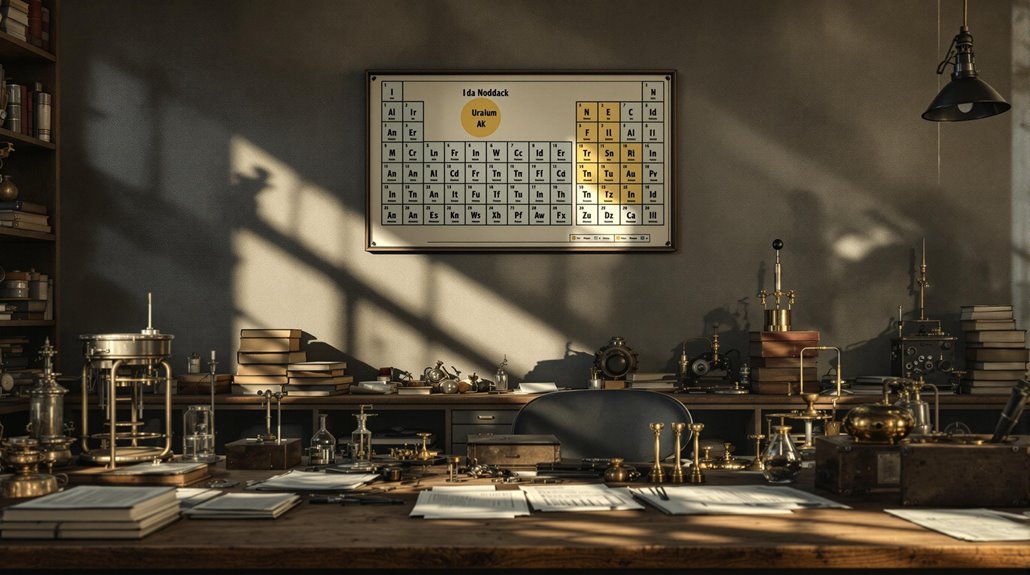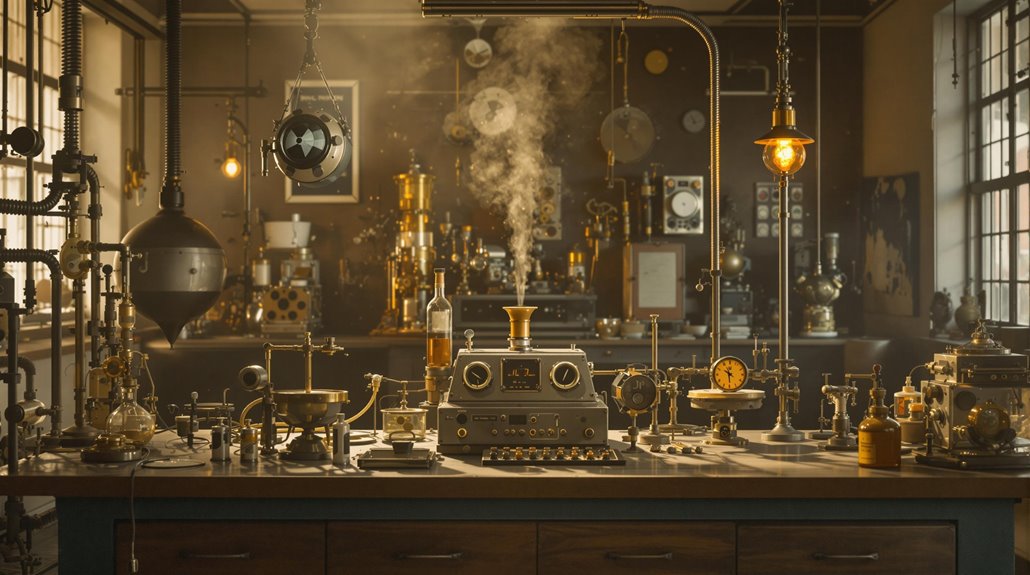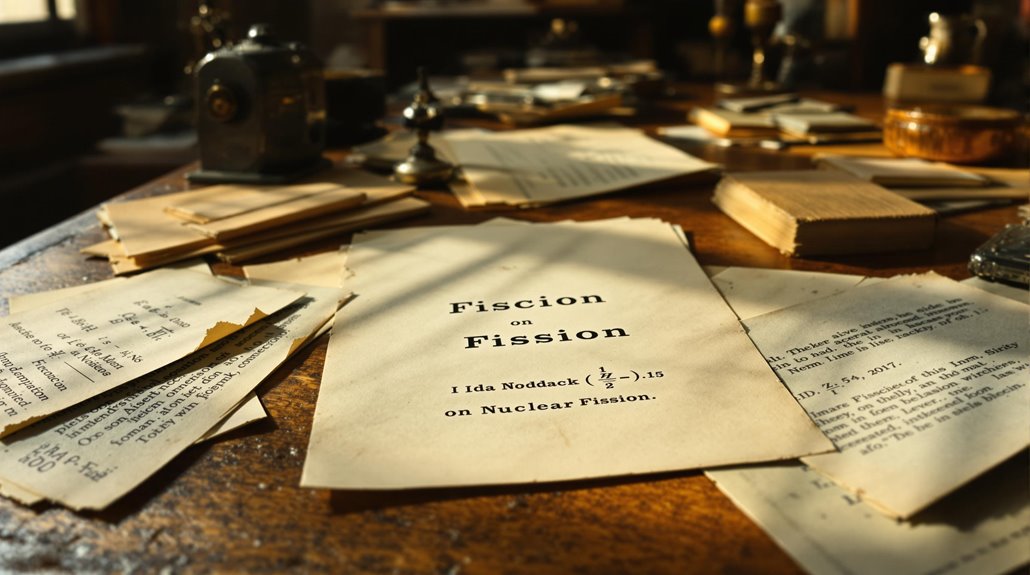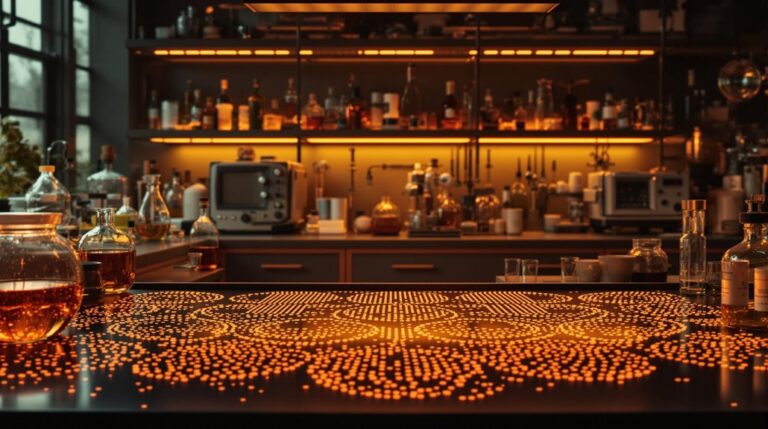How Ida Noddack’s “Crazy” Fission Theory Became Chilling Reality
You've probably heard about the Manhattan Project and the dawn of nuclear power, but you don't know the full story. Before the world's most famous physicists split the atom, a brilliant German chemist named Ida Noddack proposed a theory that her peers considered absurd. Her controversial idea about uranium's ability to break into lighter elements met fierce resistance, only to be proven devastatingly accurate years later. What unfolds next reveals both the triumph of scientific truth and the price of dismissing unconventional thinking.
The Rise of a Female Pioneer in German Chemistry

Three remarkable milestones marked Ida Noddack's early path in chemistry: becoming one of Germany's first female chemistry students, earning her doctorate, and breaking into the male-dominated chemical industry.
Born in 1896, she exemplified female empowerment when she defied social norms to study at the Technical University of Berlin, graduating in 1919 and completing her doctorate by 1921.
During World War I, she witnessed female enrollment in chemistry rise from three to thirty-five percent.
You'll find her scientific resilience evident in how she navigated the challenges of being a woman in chemistry.
Despite facing constant skepticism from male colleagues and often working without pay, she persevered.
Her groundbreaking career led her to the Physico-Technical Research Agency in Berlin, where she continued to push boundaries in chemical research.
Breaking the Nuclear Code: Noddack's Revolutionary Paper
In a remarkable challenge to conventional nuclear physics, Ida Noddack published her groundbreaking 1934 paper "On Element 93," which questioned Fermi's claims about transuranic elements and proposed the revolutionary concept of nuclear fission.
You'll find that Noddack's paper went far beyond mere criticism. She introduced the radical idea of nuclear fragmentation, suggesting that uranium atoms could split into lighter elements when bombarded with neutrons.
Her theory proposed isotopic implications that were completely at odds with the accepted understanding of atomic behavior – instead of creating heavier elements, she argued the process could yield various isotopes of known elements. She would later move to the University of Freiburg in 1935 to continue her research. Her pioneering work earned her three Nobel nominations in chemistry throughout her career.
While the scientific community dismissed her ideas as outlandish, you'd be amazed to learn that she'd predicted the mechanism of nuclear fission four years before its official discovery.
The Scientific Community's Dismissal and Denial
Despite Noddack's prescient insights about nuclear fission, the scientific community's response to her 1934 paper ranged from mockery to outright dismissal.
Leading physicists, including Otto Hahn and Enrico Fermi, exhibited scientific arrogance by disregarding her suggestions and clinging to their transuranic element theory.
The prevailing gender bias of the era worsened her situation. As an unpaid collaborator in a male-dominated field, during a time when women were being pushed out of the workplace, Noddack's ideas faced additional scrutiny. As a result of Nazi ideology, she was able to secure only one professorship throughout her career.
Her credibility had already been damaged by a disputed element 43 discovery claim, and without a detailed mechanism to explain fission, her paper was easily brushed aside. Walter Noddack made efforts to get Otto Hahn to consider her proposal, but Hahn was reluctant to acknowledge her ideas.
It would take four years before the scientific community finally acknowledged what she'd known all along.
From Rejection to Vindication: The Proof of Fission
The scientific community's skepticism toward Noddack's fission theory would ultimately crumble under the weight of experimental evidence.
Collaborating with Otto Berg, Noddack had already proven her scientific acumen through groundbreaking discoveries years before her fission proposal.
Her work on the Periodic Table led to many important revelations, including the co-discovery of rhenium.
The fission timeline reached its turning point in December 1938, when Hahn and Strassmann discovered barium in uranium's bombardment products, providing the first experimental validation of nuclear splitting.
You can trace the rapid acceptance that followed: Meitner and Frisch developed the theoretical framework explaining how the process worked, calculating an energy release of 200 MeV.
Frisch then confirmed the reaction using a cloud chamber, while Bohr spread the news to American scientists.
A Prescient Mind: Reassessing Noddack's Scientific Impact

Looking back at Ida Noddack's scientific legacy reveals a researcher whose profound insights extended far beyond her fission theory.
You'll find Noddack's foresight wasn't limited to predicting nuclear fission five years before its confirmation – she also co-discovered rhenium and developed practical applications for it in lamp filaments and catalysts. She delivered a historic lecture as the first woman speaker to address the Society of German Chemists in 1925.
Her scientific resilience shines through her achievements despite significant obstacles: she worked without pay after being forced from her position, yet continued making groundbreaking contributions that earned her the Liebig and Scheele medals. She faced immense challenges as one of the first female chemists in Germany.
Today's historians are reassessing her impact, acknowledging how she correctly identified flaws in Fermi's chemical proofs while proposing what seemed an outlandish concept at the time.
The 2020 ISTR memorial medal stands as a representation of her vindicated theories and enduring influence.










